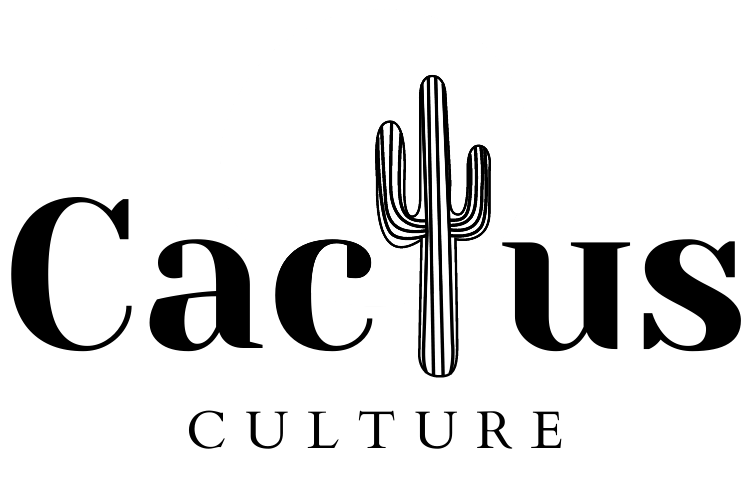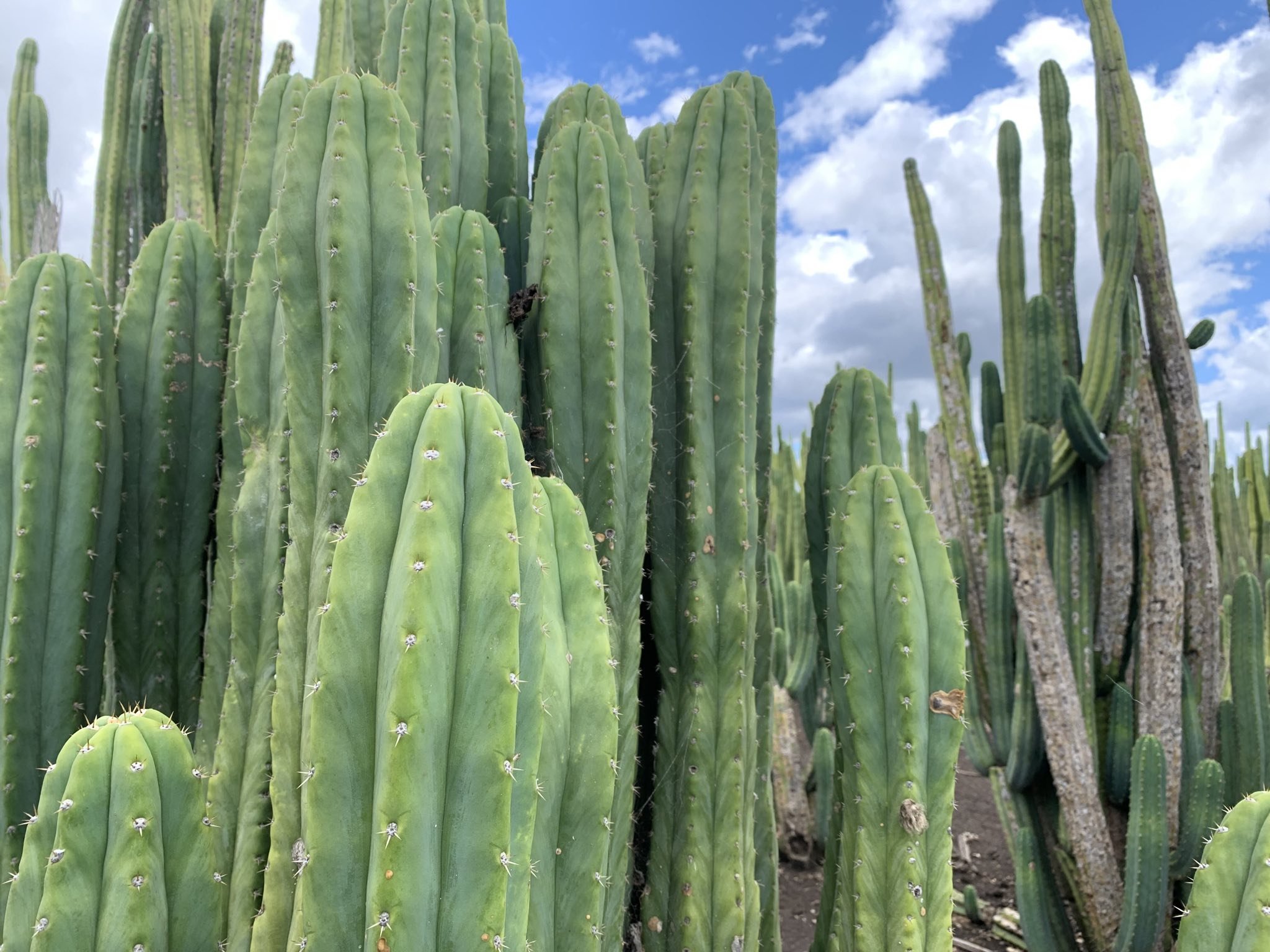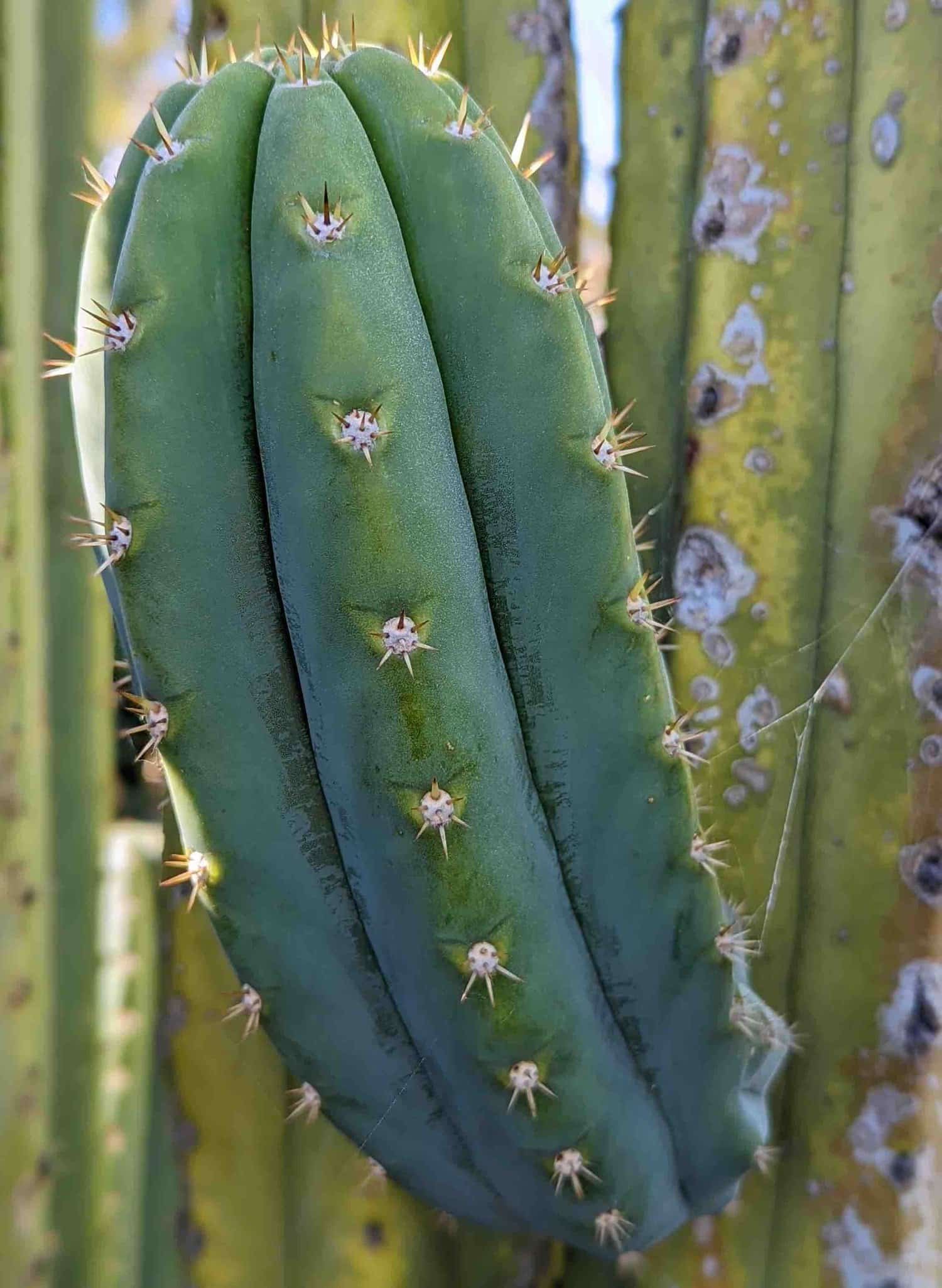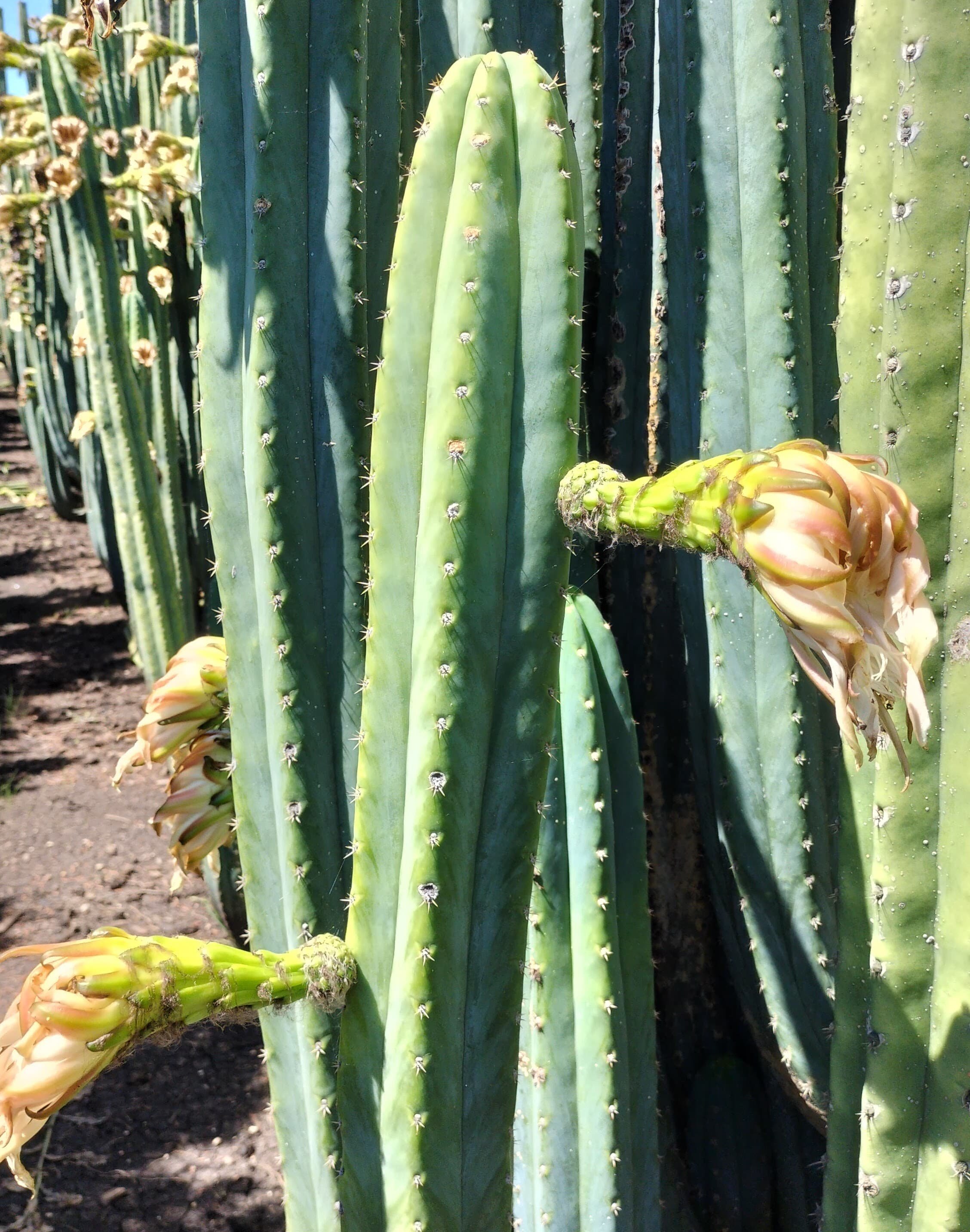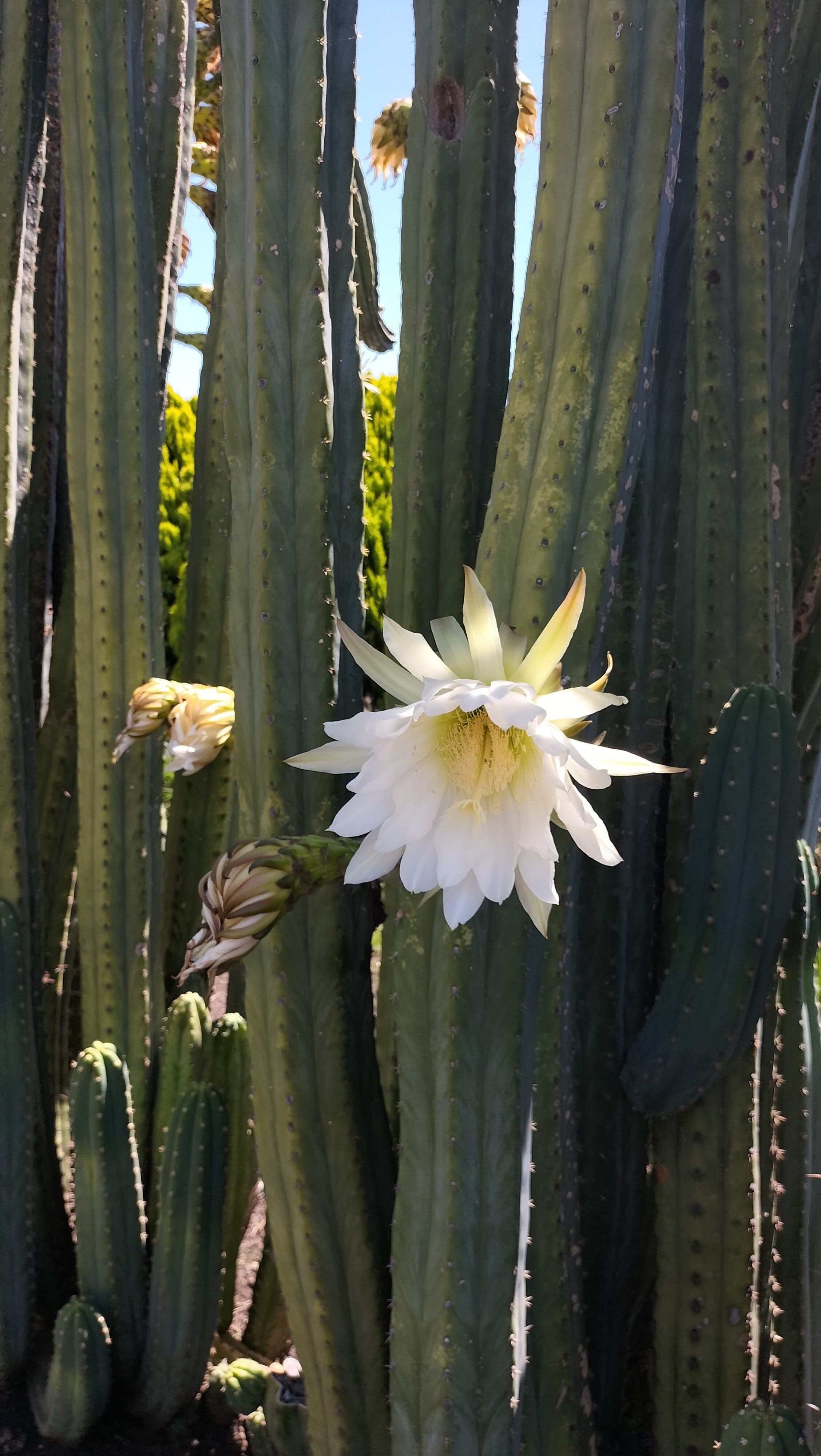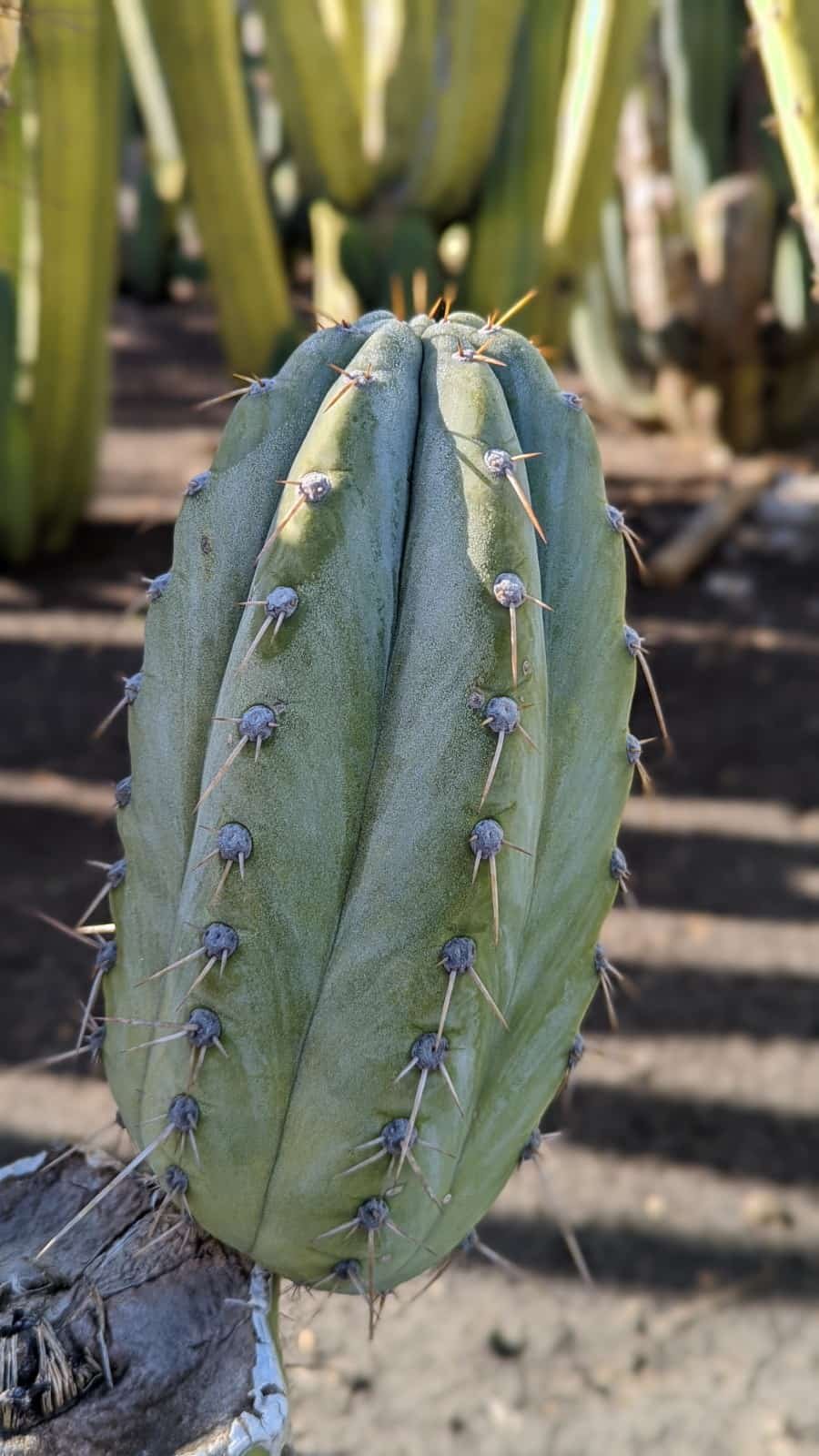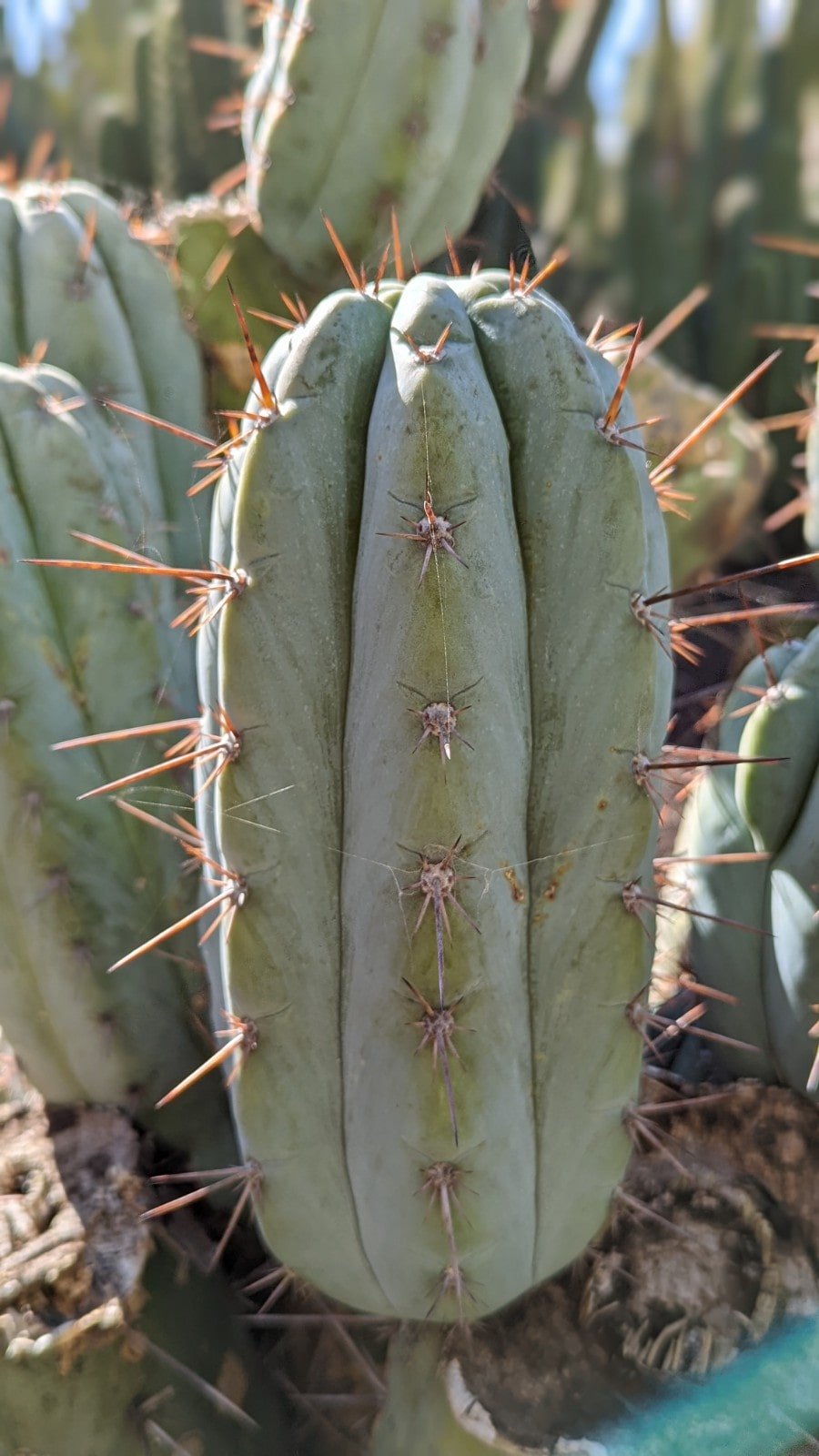How to identify San Pedro cactus
“Is this San Pedro?”
It’s one of the most common questions we get asked, accompanied by photos of a wide range of different and unrelated columnar cacti species. Quite often the answer is no, so we wrote this guide to answer that question once and for all. Regardless if you’re new to San Pedro cactus or new to cacti in general, by the end of this guide you should be able to drive past a cactus at 50 km/h and still know what you saw.
To begin with, the San Pedro cactus is the species of cactus called Echinopsis pachanoi. Some people call it Trichocereus pachanoi, which we cover in more detail here. Other people (mistakenly) use the term San Pedro as a collective word to describe a number of different columnar Echinopsis cacti, but make no mistake, the San Pedro cactus refers to one distinct species, Echinopsis pachanoi.
Before we get into the specifics of identifying the San Pedro cactus you first need know some crucial terminology.
Ribs are the protruding rows that run vertically from the crown to the base of the plant. Spines and flowers always grow at the edge of the ribs. Cactus ribs help to keep the plant cool by creating shaded troughs/pockets between them, and increasing the surface area to dissipate heat.
Areoles are small, round bumps that can either be light or dark which grow centrally down the ribs. Spines grow in clusters from the areoles. Flowers also bloom from the areoles.
Spines are quite self explanatory, they are the sharp needles that grow from the areoles. Cactus spines are leaves that have been modified over long periods of time to protect themselves from herbivores and also minimise moisture loss compared to traditional leaves.
How to identify San Pedro Cactus
Ribs - The San Pedro cactus most commonly has 6 to 8 rounded ribs, but in rare cases can have as little as 4 and as many as 10. The troughs/pockets between the ribs are usually quite shallow, and only sink deep toward the centre of the cactus when the plant is severely dehydrated.
Areoles - The San Pedro cactus has light/white areoles. They often have a furry/fuzzy appearance to them. Above each areole you will typically see a notch or “eyebrow” as it is often called.
Spines - San Pedro spines are small (2-5mm), typically point upwards and are usually a light yellow in colour. Typically 6 spines per areole.
Colour - The colour of a San Pedro ranges from deep forest green to slightly blue.
Flowers - San Pedro flowers are enormous, white and bloom at night like most other cacti.
Branches - Mature San Pedro will produce “pups” which are essentially branches. These pups usually form near the base of the cactus, and will only grow vertically. An old San Pedro at a glance looks like a dense thicket of multiple cacti, rather than a branching tree.
San Pedro Cactus Lookalikes (Imposters)
Sometimes the best way to learn how to identify a plant is to learn what it isn’t. Below are a number of photos of cactus species that often get confused with San Pedro, along with some pointers on what to look for.
Cereus repandus (Peruvian Apple)
The Peruvian Apple is one of the cacti most commonly mistaken as San Pedro, and it’s easy to see why. It has a similar colour, the areoles are the same colour and they are both fast growing columnar species. Take a look at the photo to the right (or below if you’re on mobile) and you’ll notice two things:
Ribs - The ribs of a Peruvian Apple Cactus are much flatter and skinnier than San Pedro ribs. In addition, this makes the troughs/pockets between the ribs much deeper, in some plants almost going as far are the centre of the plant when viewed from the top.
Spines - The spines of a Peruvian Apple Cactus are usually considerably longer than those of a San Pedro cactus. In particular, each areole on a Peruvian Apple Cactus typically has one spine which is considerably longer than the others, this is not common with San Pedro cactus.
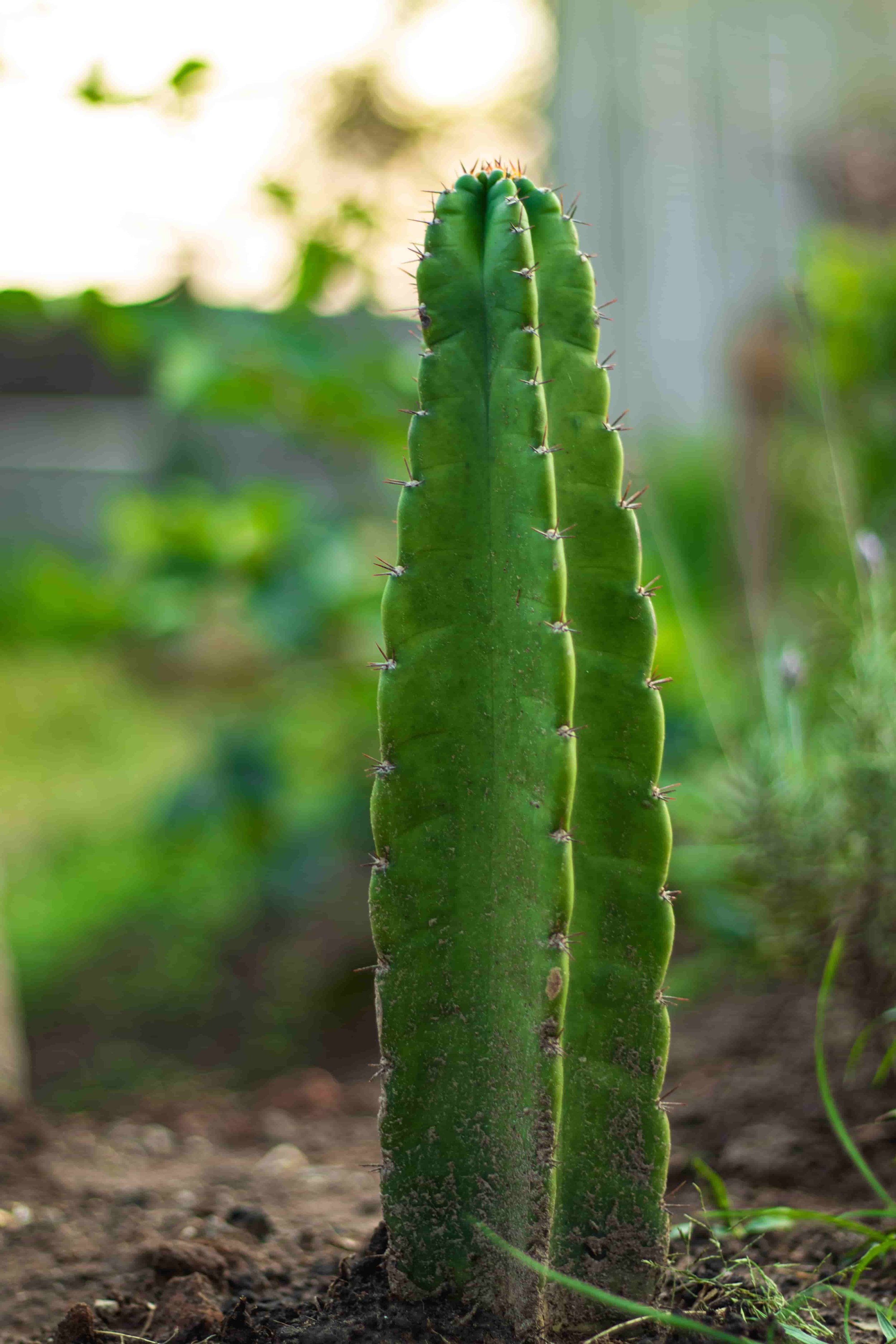
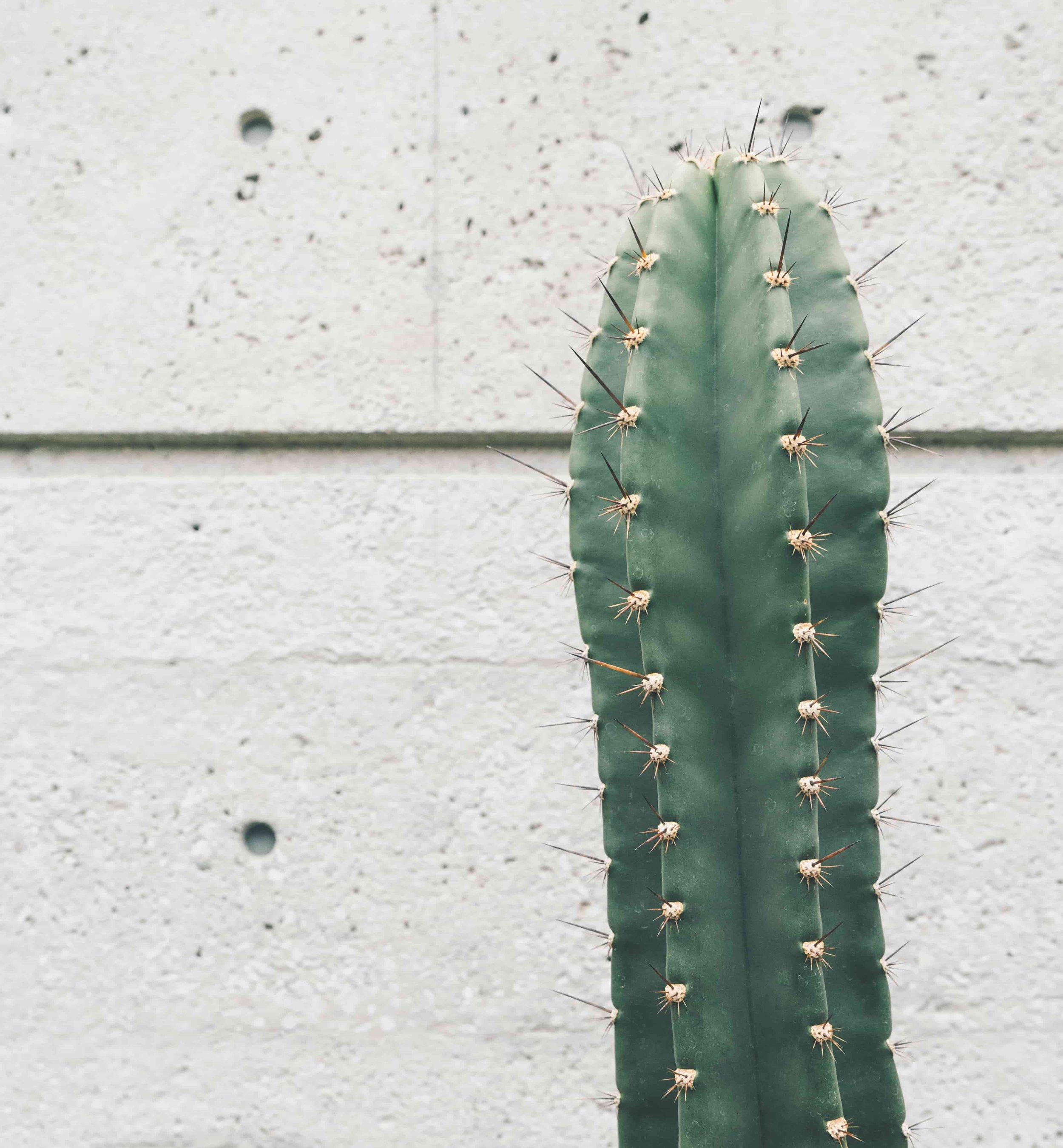

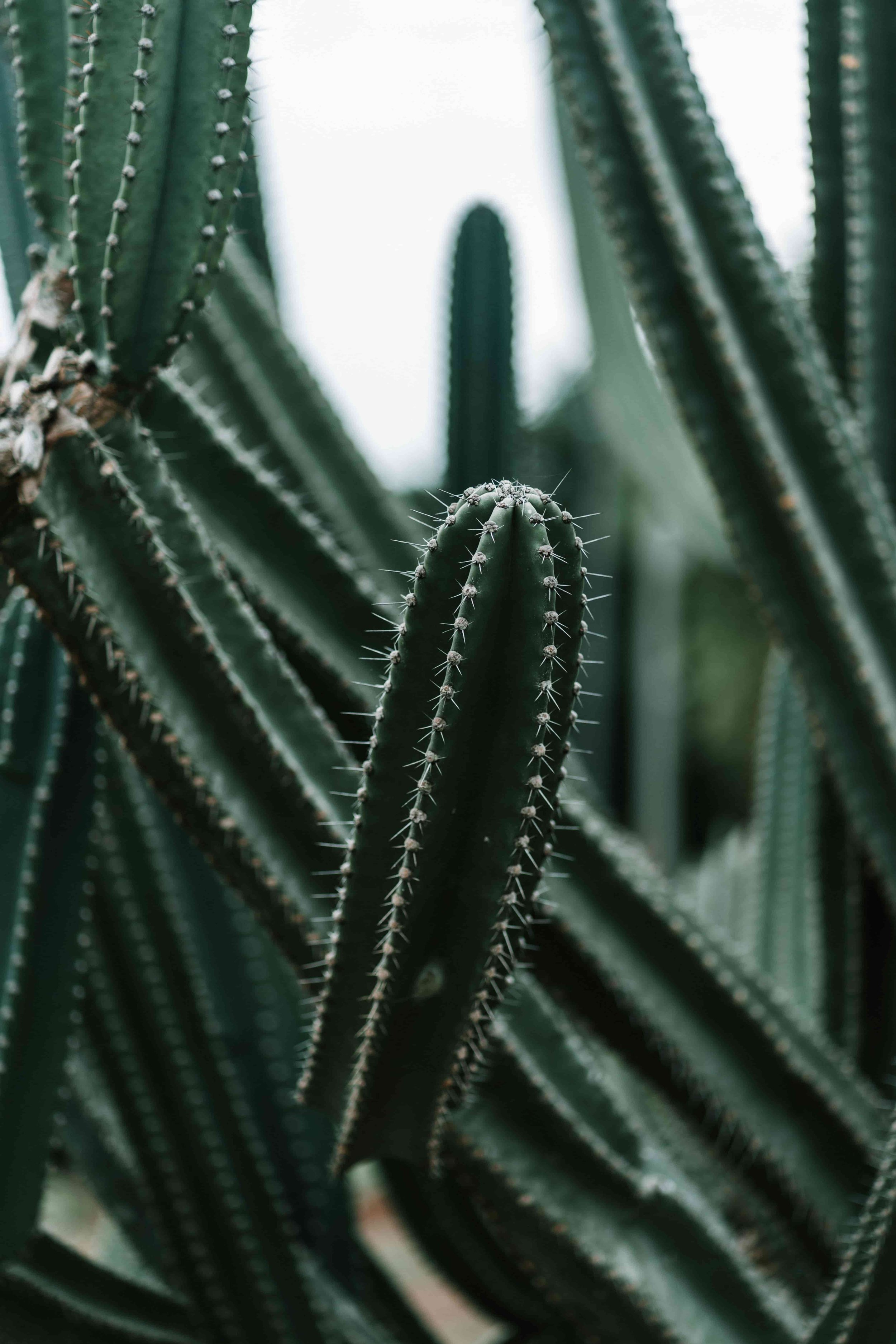
Myrtillocactus geometrizans (Blue Myrtle Cactus)
Blue Myrtle Cactus is a columnar species of cacti native to central and northern Mexico. To the untrained eye it can have a similar appearance to San Pedro but there are some key differences.
Spines - Blue Myrtle Cactus spines are dark-black and feature one dominant, extra long central spine.
Colour - As the name suggests, Blue Myrtle Cactus often has a vibrant blue hue to its skin. Whilst San Pedro cactus can take on a light blue/grey hue it is a lot more subtle than the Blue Myrtle.
Branches - The Blue Myrtle Cactus has an enthusiastic branching habit, often “pupping” after only a few years of growth. Branches will form as far as half way up the stem, and new branches will form on those branches leading to a wild “bushy” look to the plant.
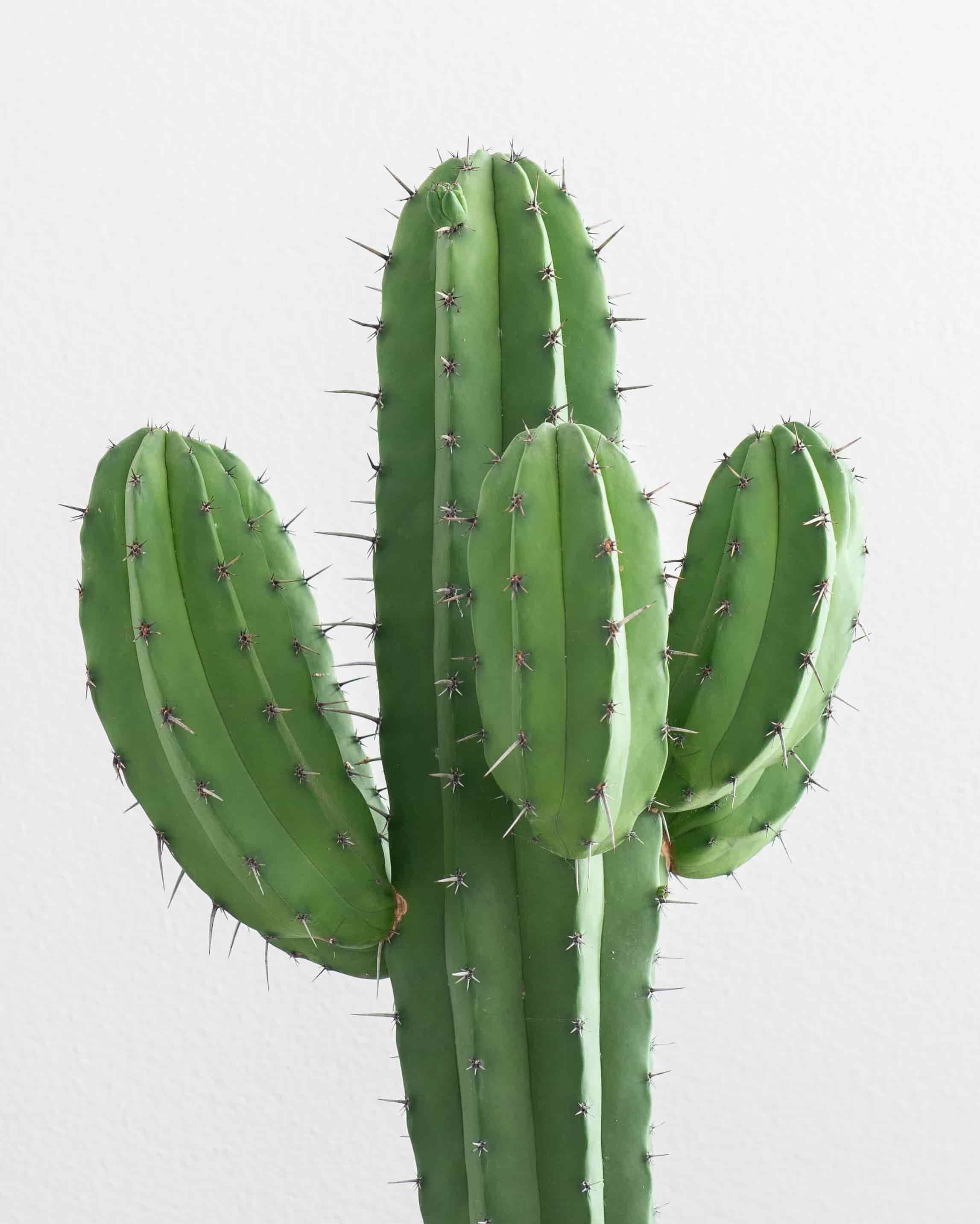
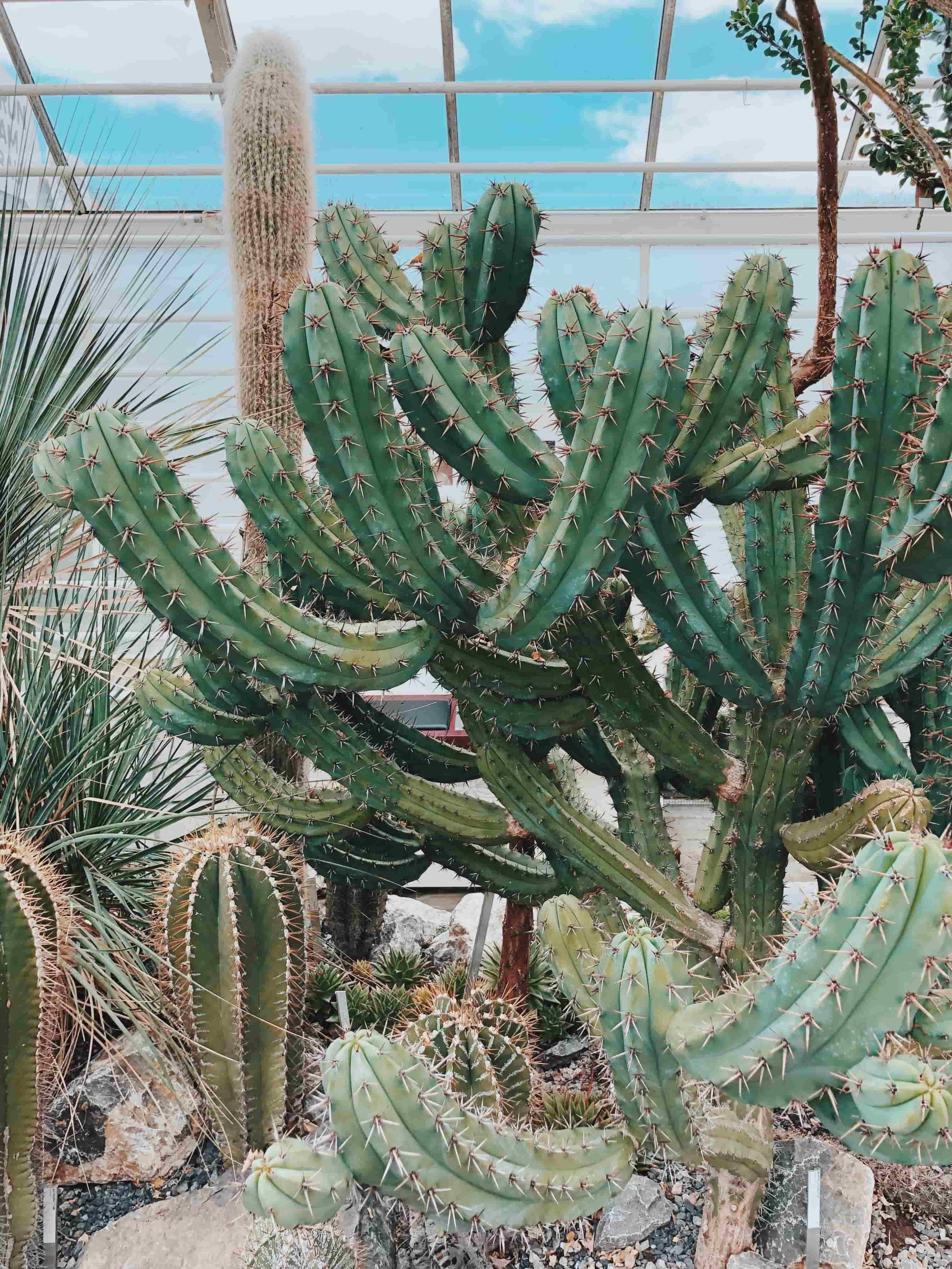
Pilosocereus pachycladus (Blue Torch Cactus)
Pachycladus is the most commonly cultivated species in the genus Pilosocereus but all the species are commonly referred to as Blue Torch Cacti. These cacti are native to Neotropics of South America, and mostly concentrated in Brazil.
Spines - Blue Myrtle Cactus spines are light in colour, 5-10mm in length and dense enough to overlap the spines from the areoles above and below it. Some species of Blue Torch also have a tufted hairy areole which is a distinct identifying factor.
Colour - The easiest way to identify the Blue Torch cactus is by its brilliant blue colour. It is by far the most obviously blue of any cacti species, which easily sets it apart from the subtle blue-green of the San Pedro cactus.
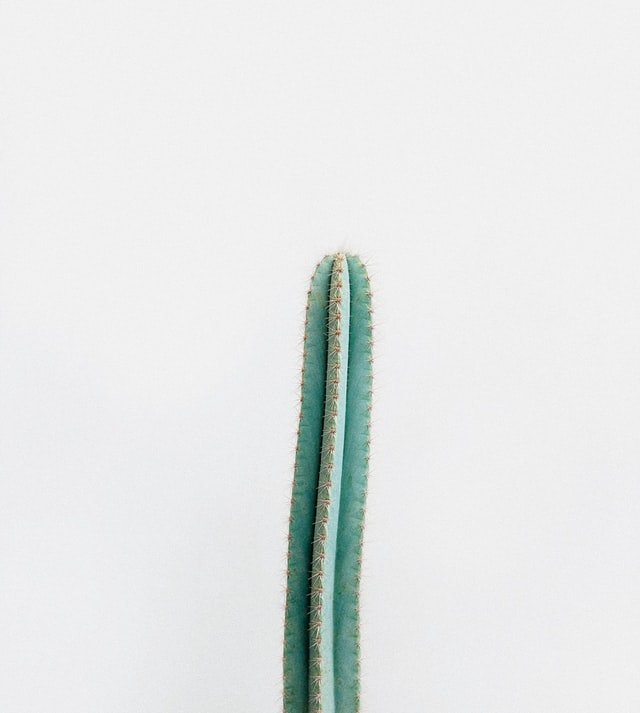
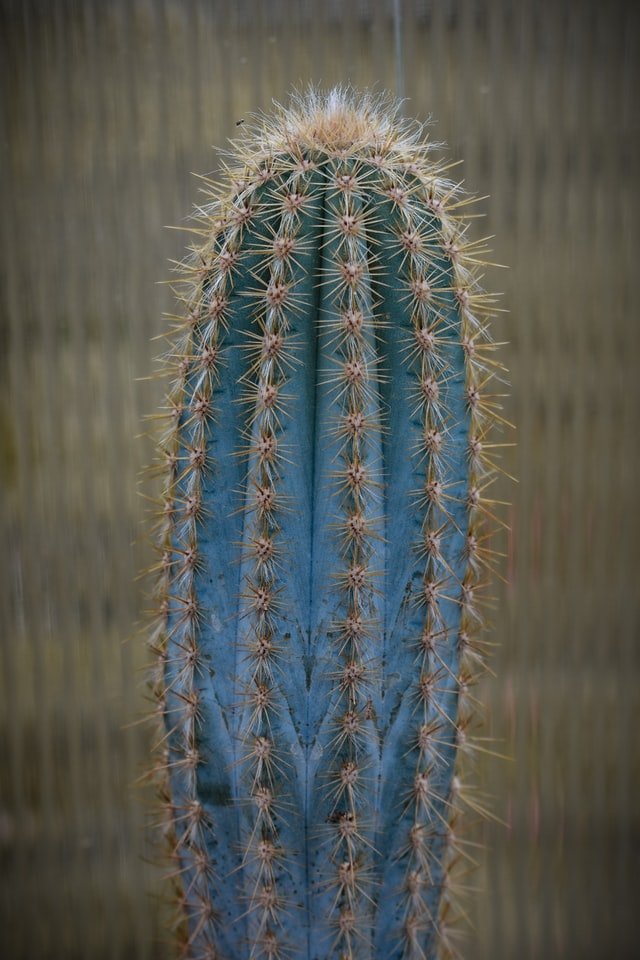
Same Genus, Different Species
It’s important to note that the cactus species listed above are not closely related to Echinopsis pachanoi and belong to completely different cactus genera. Cacti species that are part of the same genus as Echinopsis pachanoi and are closely related, however, can be extremely difficult to distinguish, particularly those that also used to be in the Trichocereus genus.
Echinopsis peruviana (Peruvian Torch Cactus)
Echinopsis peruviana was formerly known as Trichocereus peruvianus and is also known by its common name the “Peruvian Torch”. It is an absolutely stunning plant that has a gorgeous blue colour and as the name suggests, is endemic to the Andes Mountains, specifically the western slope in Peru. It is genetically and visually quite similar to the San Pedro cactus in its growth habit, number and shape of ribs and areoles but there are a few telltale differences.
Colour - Much like the previously mentioned Blue Torch, the Peruvian Torch cactus is easily noticeable by its brilliant blue colour. Whilst the San Pedro can sometimes take a blue sheen in good growing conditions, it will never get the same brilliant blue as seen in the photos shown here.
Spines - The easiest way to differentiate Peruvian Torch from San Pedro is the spines. There is a great deal of variation in the size of Peruvian Torch cactus spines, ranging from 10mm going all the way up to 150mm+ which is considerably longer than any San Pedro cactus spines even at the lowest end.
In addition to their drastically different size, the spines of the Peruvian Torch cactus are also a different colour. Whereas San Pedro spines are yellow the Peruvian Torch spines start off as a browny-yellow and turn to bone white as they age.
